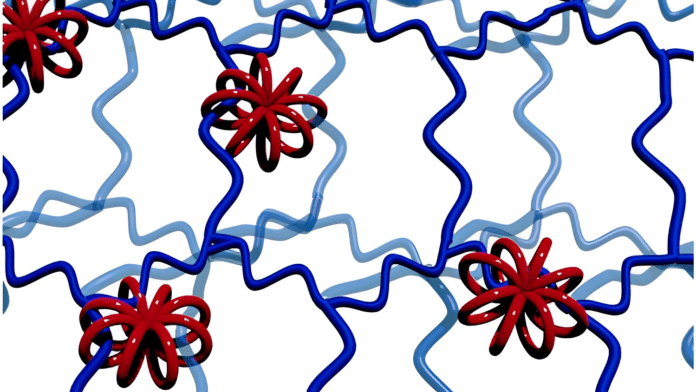Micro-rotaxanes have a high degree of structural freedom and are useful for applications in soft materials. Rotaxanes are interlocked molecular structures with a linear ‘axle’ molecule penetrating one or more cyclic ‘wheel’ molecules. Researchers at Hokkaido University have taken this technology a step further by creating macro-rotaxanes with multicyclic wheels interlocked with several high-molecular-weight axles.
It has been found that multicyclic polymers with more cyclic units and higher ring diameters can be quantitatively trapped, with up to 50% of them successfully topologically trapped as macro-rotaxanes. These macro-rotaxanes are being explored for applications like next-generation polymers, molecular computing, sensor technologies, and drug delivery.
The researchers and collaborators in Japan are focusing on creating new network polymers with complex ring structures that hold together different strands of long polymer chains.
Polymer chemist, Professor Toshifumi Satoh of the Hokkaido team, said, “We think the multicyclic structures in these macro-rotaxanes could be useful as non-leaching additives, permanently retained in a polymer network by the way they hold onto several neighboring polymer chains.”
A 3D wheel is a unique and highly flexible molecular crosslink, allowing the wheels to move more freely than conventionally crosslinked networks. Various structural variations should allow fine control over the properties of soft materials, making them suitable for industrial and medical applications.
The researchers used polydimethylsiloxanes (PDMSs) to make the multicyclic rings. The multicyclic units became efficiently incorporated into a newly-forming extended, mixed, and interlocked network when combined with silicone polymer chains with short crosslinking agents.
Satoh said, “We explored some of the potentials for making modified soft materials by measuring the damping performance of the networks, which is essentially the ability of a material to absorb and reduce vibrations. This revealed that our macro-rotaxanes significantly improved damping efficiency relative to conventional polymer networks.”
They measured the damping performance of the networks and found significant improvements in damping efficiency relative to conventional polymer networks. The researchers plan to explore further possibilities based on the proof-of-concept foundations laid by their current progress.
The Ministry of Education, Culture, Sports, Science, and Technology funded the study.
Journal Reference:
- Minami Ebe, Asuka Soga, et al. Rotaxane Formation of Multicyclic Polydimethylsiloxane in a Silicone Network: A Step toward Constructing “Macro-Rotaxanes” from High-Molecular-Weight Axle and Wheel Components. Angewandte Chemie International Edition. DOI: 10.1002/anie.202304493
